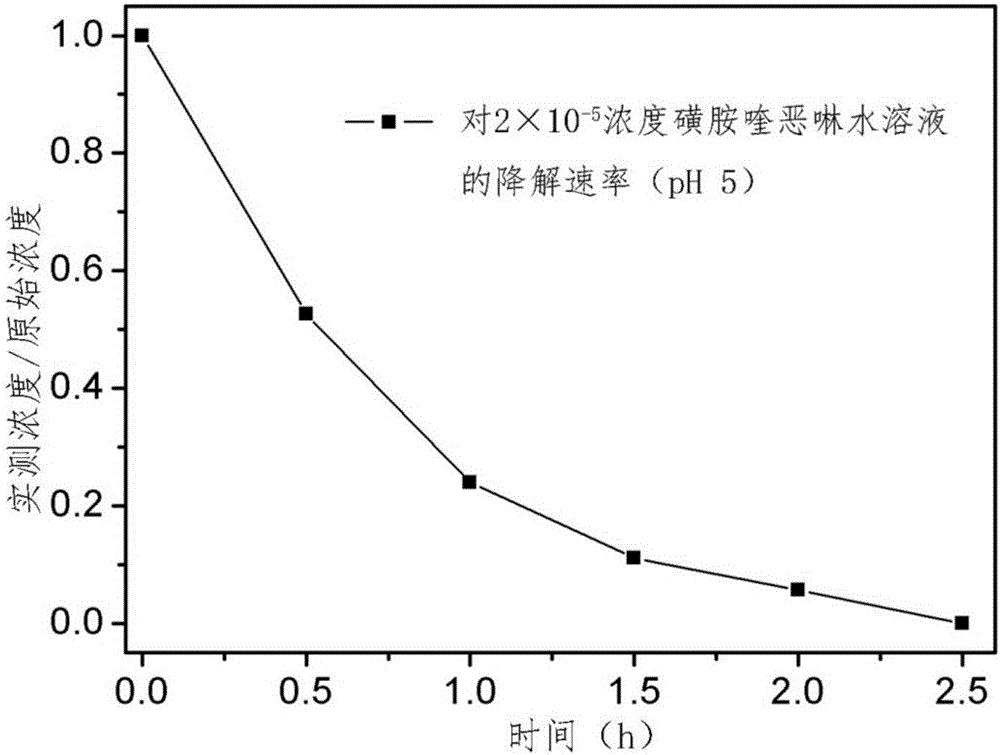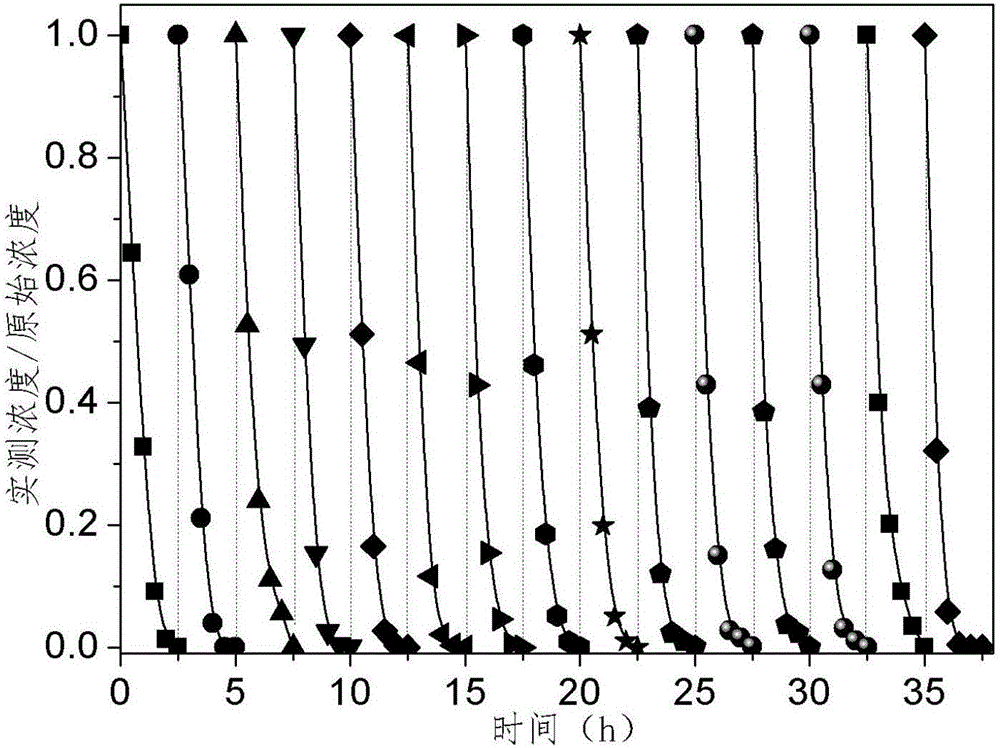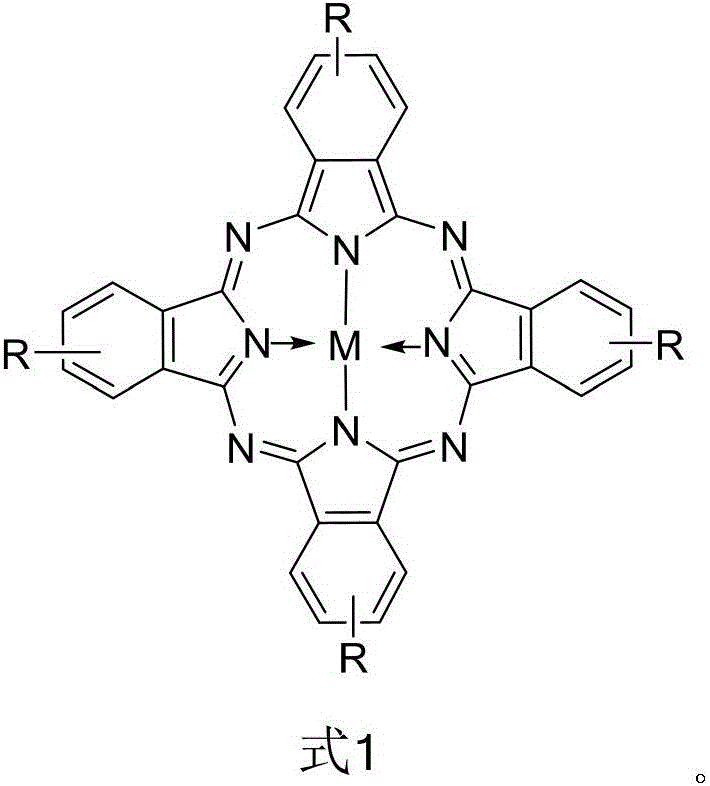Composite photocatalytic fibers and preparation method thereof
A composite photocatalysis and composite light technology, applied in the field of photocatalytic materials, can solve problems such as poor photocatalytic degradation effect
- Summary
- Abstract
- Description
- Claims
- Application Information
AI Technical Summary
Problems solved by technology
Method used
Image
Examples
preparation example Construction
[0023] The invention provides a method for preparing a composite photocatalytic fiber, comprising the following steps:
[0024] Spin the composite photocatalyst and polyester polymer to obtain the precursor;
[0025] The composite photocatalyst inside the precursor is exposed to obtain a composite photocatalyst fiber.
[0026] In the invention, the composite photocatalyst and the polyester polymer are spun to obtain the raw silk. In the present invention, the polyester polymer is preferably polyethylene terephthalate, polypropylene terephthalate, polybutylene terephthalate, polyethylene naphthalate , polybutylene succinate, polylactic acid, polyester elastomer and polyglycolide or a mixture of several substances, specifically one, two, three, four, five one, six, seven or eight.
[0027] In the present invention, the polyester polymer is polyethylene terephthalate, polytrimethylene terephthalate, polybutylene terephthalate, polyethylene naphthalate, A copolymer of several ...
Embodiment 1
[0077] Weigh 10 parts of composite photocatalyst (with 80% TiO 2 and 20% g-C 3 N 4 Composite) was added to 90 parts of PET polyester for melt spinning to obtain a precursor with a fiber diameter of 20 μm. Then, the precursor that takes by weighing 100g adds alkali weight reduction bath with the bath ratio of 1:30 (the concentration of sodium hydroxide is 5g / L, and the concentration of accelerator cetyltrimethylammonium bromide is 0.4g / L , water temperature 80°C) for 60 minutes, then washed with water until neutral, placed in an oven at 60°C and dried flatly to obtain a composite photocatalytic fiber. Weigh its quality, and calculate its alkali reduction rate to be 13%.
[0078] In the present invention, the composite photocatalytic fiber obtained in this embodiment is subjected to sulfaquinoxaline (SQX, the concentration is 2×10 -5 mol / L) for photocatalytic degradation experiments, the experimental results are as follows figure 1 said, figure 1 It is the photocatalytic d...
Embodiment 2
[0081] Weigh 8 parts of composite photocatalyst (with 89% TiO 2 , 10% g-C 3 N 4 Composite with 1% zinc phthalocyanine) was added into 92 parts of PBT polyester for melt spinning to obtain a precursor with a fiber diameter of 25 μm. Then, the precursor that takes by weighing 100g adds alkali weight reduction bath with the bath ratio of 1:50 (the concentration of sodium hydroxide is 8g / L, and the concentration of accelerator cetyltrimethylammonium bromide is 0.4g / L , water temperature 90°C) for 60 minutes, then washed with water until neutral, placed in an oven at 60°C and dried flatly to obtain composite photocatalytic fibers. Weigh its quality, calculate its alkali reduction rate of 25%.
[0082] The present invention tested the composite photocatalytic fiber obtained in this example according to the method of Example 1, and the test results showed that the degradation activity and cycle degradation performance of the composite photocatalytic fiber provided in this example ...
PUM
| Property | Measurement | Unit |
|---|---|---|
| Diameter | aaaaa | aaaaa |
| Diameter | aaaaa | aaaaa |
| Particle size | aaaaa | aaaaa |
Abstract
Description
Claims
Application Information
 Login to View More
Login to View More - R&D
- Intellectual Property
- Life Sciences
- Materials
- Tech Scout
- Unparalleled Data Quality
- Higher Quality Content
- 60% Fewer Hallucinations
Browse by: Latest US Patents, China's latest patents, Technical Efficacy Thesaurus, Application Domain, Technology Topic, Popular Technical Reports.
© 2025 PatSnap. All rights reserved.Legal|Privacy policy|Modern Slavery Act Transparency Statement|Sitemap|About US| Contact US: help@patsnap.com



